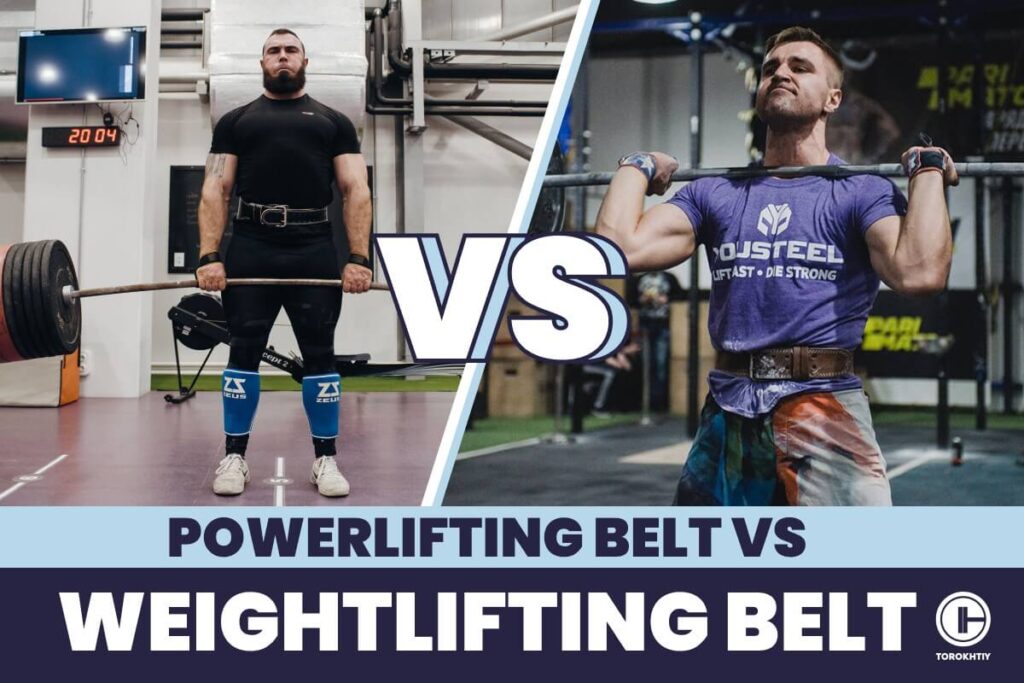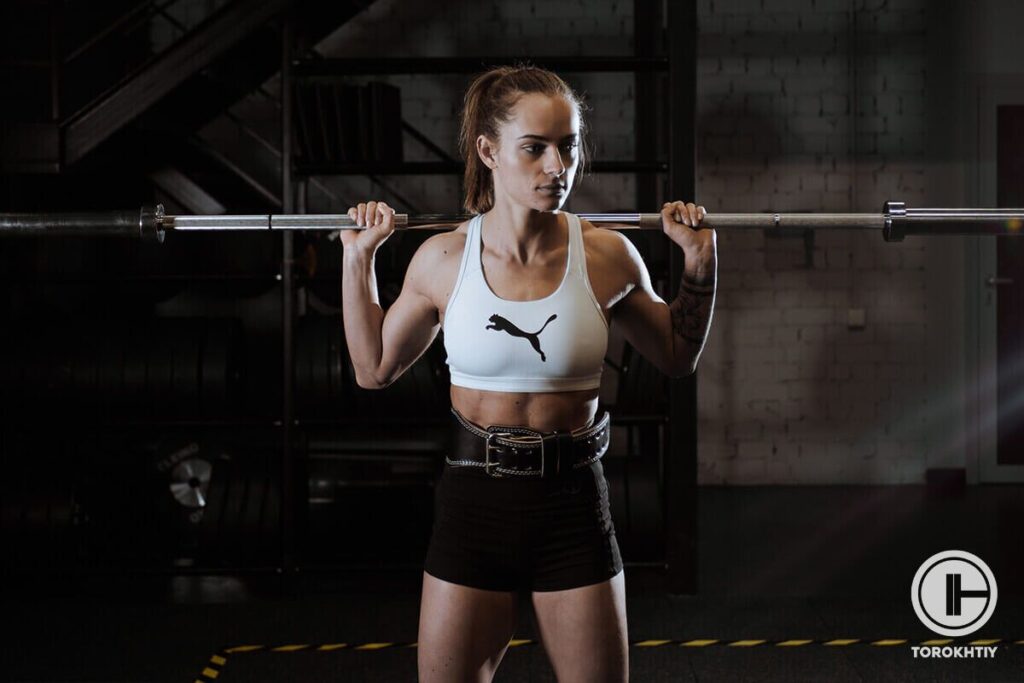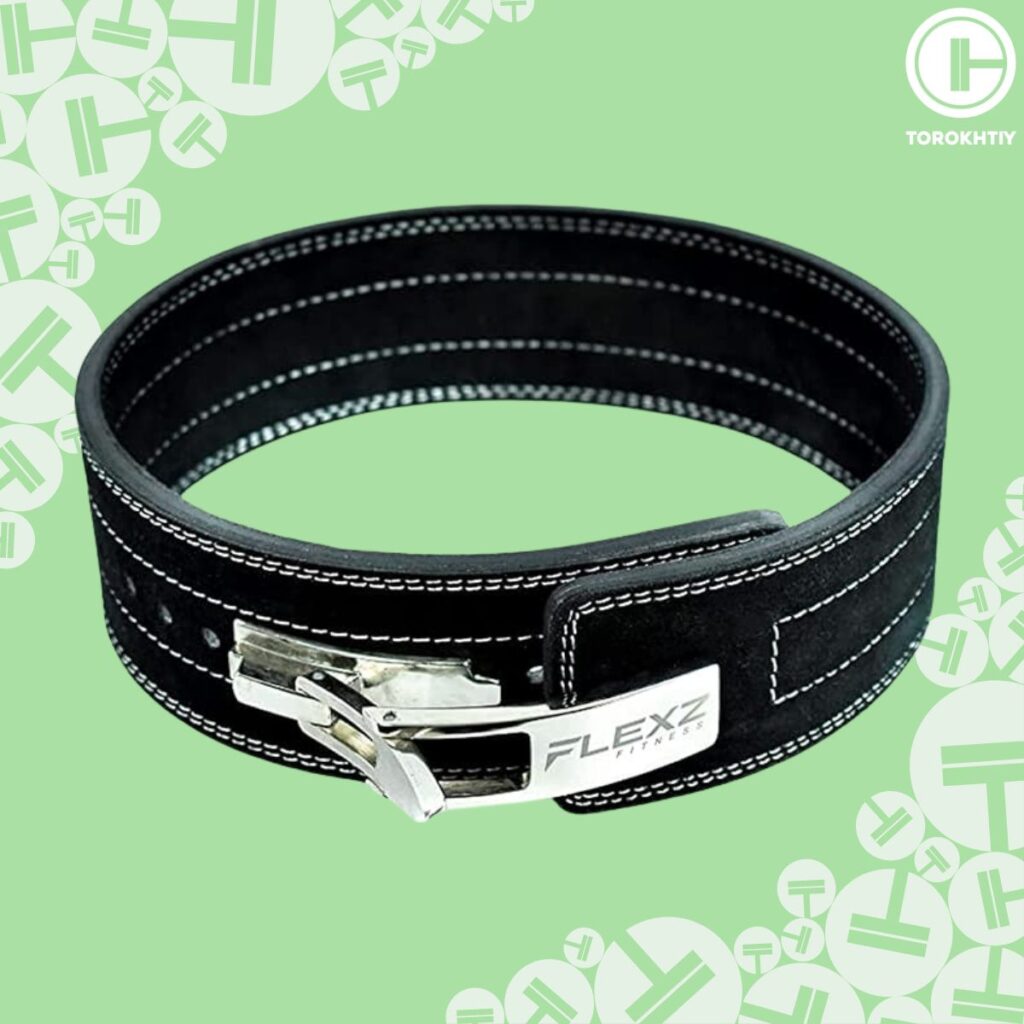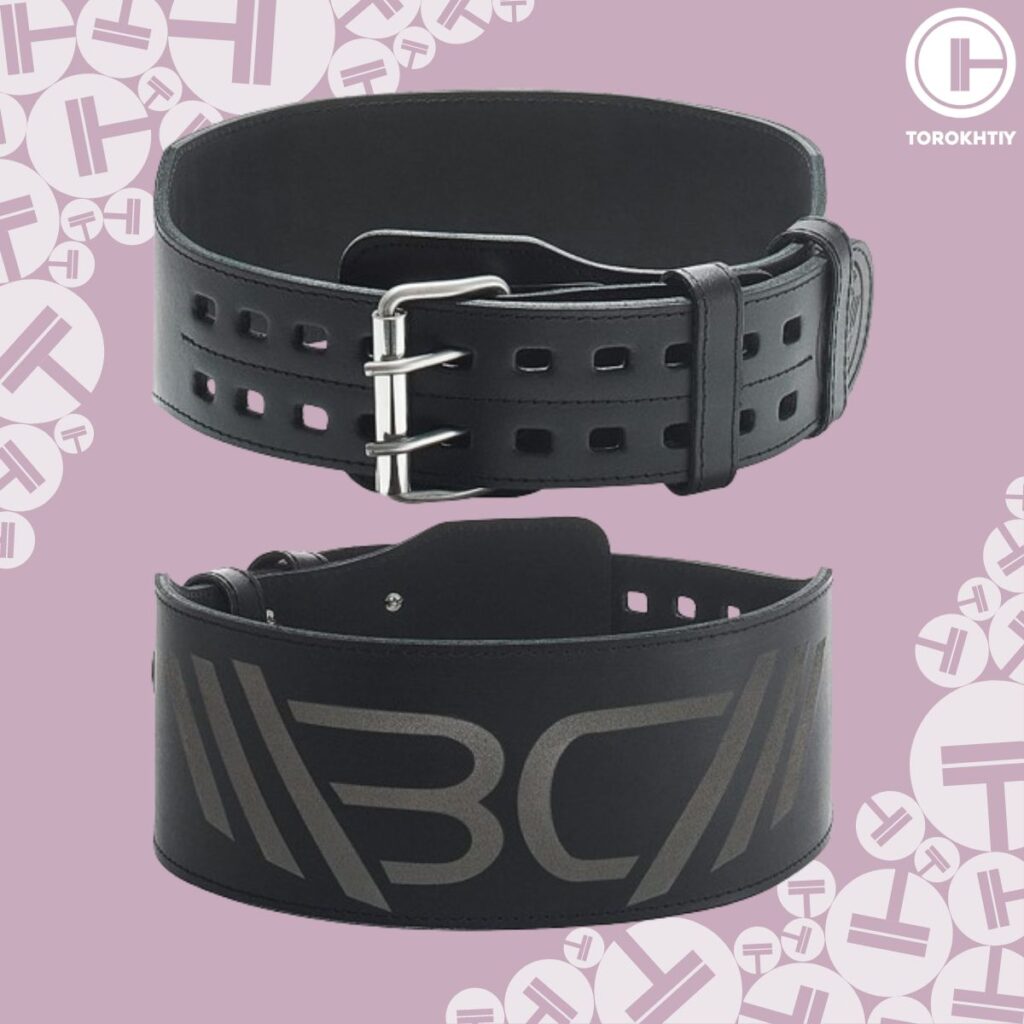Powerlifting Belt vs Weightlifting Belt: What is the Difference?
Author:
Unlock your full potential by engaging with our experts and community! Have questions about your fitness journey or looking for expert advice on weightlifting techniques? Don’t hesitate — leave a comment below and Oleksiy Torokhtiy will provide a personalized answer and insights to help you reach your goals.
Torokhtiy is reader-supported. Some links are affiliate links, and we may earn a commission at no extra cost to you. See our disclosure page for details.
A powerlifting belt is different from a weightlifting belt. It’s important for you to know the difference to ensure that you’re purchasing the right one for you. In this article, I’ll discuss the distinguishing factors between a weightlifting belt vs powerlifting belt.
Powerlifting belt vs weightlifting belt: The difference between weightlifting and powerlifting belt is that a powerlifting belt is typically constructed with a 4-inch wide rigid leather and is best for squats, bench presses, and deadlifts while a weightlifting belt is made of flexible nylon or leather and will be a much better choice for snatches and cleans & jerks.

Are You a Powerlifter or Weightlifter?
There are some key differences between the two. Powerlifting involves a slower movement speed, and a focus on strength in three primary lifts: squat, bench press, and deadlift. This strength sport heavily focuses on lifting as much weight as possible in a single rep.
On the other hand, Olympic weightlifting involves highly skilled and technical combination of movements carried out at a rapid pace that combines elements of strength, power, speed, and mobility. Weightlifting consists of two competition lifts: snatch and clean & jerk.
1. Official Rules
Powerlifting. There are multiple independent regulatory organizations for powerlifting, and each has its own set of rules and regulations, and the most notable is the International Powerlifting Federation (IPF). The following are the IPF specifications for lifting belts:
- It is prohibited to wear a belt under lifting suits.
- It should be constructed from leather, vinyl, or some other non-stretchable material.
- Laminations that are stitched or glued are acceptable.
- It cannot contain any padding, bracing, or other forms of support.
- It may come with a single prong, two prongs, or a lever.
- The buckle needs to be firmly fastened with stitching or studs.
- The design must be simple and devoid of branding unless specifically permitted by IPF.
- Upon IPF clearance, you can add a logo of your name or country.
- The belt cannot be more than 13mm thick or 4″ wide.
- The inside and outer widths of the buckle should be 11 and 13 cm, respectively.
- The tongue loop should be positioned 25 cm or less from the end of the belt.
- The tongue loop can only be up to 5 cm wide.
Weightlifting. Weightlifting competitions conform to the rules and regulations of the International Weightlifting Federation (IWF). The following are the IWF specifications for lifting belts:
- Athletes may wear a weightlifting belt. It must be worn outside the costume if it is utilized.
- The belt cannot be wider than 12 cm.
2. Material
The main difference in terms of the material is that a powerlifting belt should be rigid while a weightlifting belt should be bit more flexible.
Although some powerlifting belts are made of vinyl, leather makes up the majority of them. Both of these materials lack flexibility, so if you take up a powerlifting belt, you’ll note that its rigidity requires you to manually wrap it around your torso.
On the other hand, weightlifting belts are usually leather-made (especially when it comes to Olympic weightlifting). It’s the rigidity of the leather that provides the necessary support for lifting heavy loads, making them ideal for competitions. Some nylon belts can also provide ample support and can be a good option here, but the preference for leather often comes from tradition and proven effectiveness.
Vinyl/nylon belts generally offer more flexibility, making them more suitable for movements that require mobility (e.g., cross-training), and are also generally more comfortable than leather belts.
Simply put, powerlifters lift bigger loads than weightlifters do. And this is mostly because the former perform less dynamic movements and that they do not hold the load overhead. For these reasons, powerlifters need tougher and more rigid belts than weightlifters.

3. Closure type
A powerlifting belt typically employs a prong or a lever buckle. The mechanism of a prong buckle is comparable to that of any regular belt. You choose a hole that fits your torso then pull the belt strap through the loop. On the other hand, a prong belt offers the flexibility to wear the belt looser or tighter depending on the lift while a lever belt is somewhat more secure.
We personally recommend prong belts as they offer much more flexibility in case of tightness. Many powerlifters often use different “holes” for different lifts/weights – which in case of lever is basically impossible unless you have a screwdriver with you and don’t mind extra work.
Weightlifting nylon belt is secured by velcro, however, leather weightlifting belts will have prong-style buckles. The belt’s velcro closure mechanism is designed to leave as little material in front of the body as possible. If belt had a large buckle, they would run the danger of clipping it while performing the movements.
4. Design
The width of a powerlifting belt is constant throughout while a weightlifting belt is tapered so that it’s wider in the back and narrower in the front. The typical width of a powerlifting belt is 4 inches all the way around because powerlifters require equal support around their torsos for effective bracing.
In contrast, a weightlifting belt typically has a rear width of 4 inches and a front width of 2-3 inches. This allows the lifter’s hips to move a little more easily into the deep end ranges of the snatch and clean & jerk. In order to execute the motions efficiently during weightlifting, mobility optimization is very important.
Belts We Recommend
FlexzFitness Weight Lifting Leather Belt
For powerlifting, my personal favorite is the FlexzFitness Lever Weightlifting Leather Belt mainly because of its quick release and its rigid build. I feel that this allows me to brace more effectively than others and it has lasted me a long time without wearing out.
WBCM Leather Weightlifting Belt
The Warm Body Cold Mind Leather Weightlifting Belt is definitely my go-to for weightlifting. The build and design give me enough support without interfering with my snatches and clean & jerks, giving me that perfect balance between stability and mobility.
FAQ
Do Olympic Weightlifters Wear Belts?
Olympic weightlifters may wear lifting belts but it’s not an absolute necessity. Some prefer to not wear a belt unless they’re maxing out while some enjoy the additional weight lifting belts allow them to lift even during training.
What Happens if You Don’t Wear a Belt When Lifting?
Once you begin lifting weights as heavy or even heavier than you, it becomes a lot easier to lose your form, and having a bad form can lead to a myriad of injuries. There is also much less room for error.
This is where lifting belts come in—they help stabilize your torso while supporting your form to keep you injury-free. Additionally, without a lifting belt, you will end up lifting lighter weights than you would have if you had one.
Is There a Difference Between Bodybuilding Belt vs Powerlifting Belt?
Powerlifting belts are thicker and heavier to provide more support for heavier lifts while bodybuilding belts can be lighter and bit more flexible than powerlifting ones.
Conclusion
The difference between weightlifting belt vs powerlifting belt is that the former promotes stability for heavier lifts while the latter provides support during complex and larger movements. The discussion above should help you in looking for the right lifting belt for you.
Let us know any thoughts or questions you have in mind in the comment section below.
Also read:
- Best Weightlifting Belt
- How to Wear Lifting Belt
- 10 vs 13mm Lifting Belts
- Using Lifting Belt for Bench Press
- What Size Lifting Belt Should I Get
- When to Use a Lifting Belt
- Best Female Weightlifting Belt
- How to Position Belt for Deadlift
- Best Dip Belt
- Weightlifting Belts Purpose
- Best Weight Training Belt
References:
- Technical and Competition Rules & Regulations // IWF:
https://iwf.sport/wp-content/uploads/downloads/2020/01/IWF_TCRR_2020.pdf - Technical Rules Book // IPF:
https://www.powerlifting.sport/fileadmin/ipf/data/rules/technical-rules/english/IPF_Technical_Rules_Book_2019.pdf - All photos are made by our Torokhtiy Media Team
Why Trust Us?
With over 20 years in Olympic weightlifting, strength training, nutrition coaching, and general fitness our team does its best to provide the audience with ultimate support and meet the needs and requirements of advanced athletes and professional lifters, as well as people who strive to open new opportunities and develop their physical capabilities with us.
By trusting the recommendations of our certified experts in coaching, nutrition, and sports training programming, as well as scientific consultants, and physiotherapists, we provide you with thorough, well-considered, and scientifically proven content. All the information given in the articles concerning workout programming, separate exercises, and athletic performance, in general, is based on verified data.
The product testing process is described in more detail here.
Author: Oleksiy Torokhtiy
Olympic Weightlifting Champion
Best Results: Snatch – 200 kg,
C&J – 240 kg
Oleksiy Torokhtiy is a professional athlete boasting 20 years of experience in Olympic weightlifting. With multiple European and World titles under his belt, he has showcased his prowess in two Olympic Games (Beijing 2008 and London 2012). Upon concluding his illustrious career, Oleksiy dedicated himself to coaching. By 2022, he had conducted over 200 weightlifting seminars worldwide. He is the visionary behind an international sportswear and accessories brand known for its motto, “Warm Body Cold Mind.” Additionally, he is an esteemed author and the creator of a series of training programs and eBooks.





Still have questions after reading our article? Unlock your full potential by engaging with our experts and community! Don’t hesitate — leave a comment below and Oleksiy Torokhtiy will provide a personalized answer and insights to help you reach your goals.